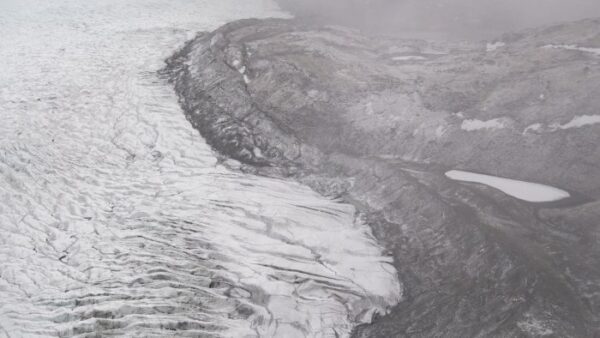Berlin, German: The failover point of irreversible global warming may already have been triggered, the scientist who led the largest expedition to the Arctic warned Tuesday.
“The disappearance of summer sea ice in the Arctic is one of the first terrestrial mines of this field of mines, one of the tipping points we first stated when we grow too far,” said Markus Rex.
“And we can essentially ask if we have not worked yet on this mine and have already triggered the start of the explosion.”
REX has led the world’s largest mission to the North Pole, an expedition involving 300 scientists from 20 countries.
The expedition returned to Germany in October after 389 days drifting by the Arctic, bringing the devastating proof of the house of a dying Arctic Ocean and ice-free summer warnings in a few decades.
The expedition of 140 million euros ($ 165 million) also brought 150 data terabytes and more than 1,000 ice samples.
Summarizing their first conclusions, scientists have stated that scientists have found that the ice of the Arctic Sea had been removed “faster in the spring of 2020 than from the beginning of documents” and that “the spread of sea ice in summer was only half as big as big decades. “
The ice was only half of the thickness and temperatures measured 10 degrees higher than during the Fram shipment undertaken by the explorers and scientists Fridtjof Nansen and Hjalmar Johansen in the 1890s.
Due to the smallest surface of sea ice, the ocean could absorb more heat in summer, which in turn means that the formation of ice plates in the fall was slower than usual.
‘Painful’
“Only the evaluation in the coming years will allow us to determine if we can always save the ice of the Arctic Sea of the year through energetic climate protection or if we have already adopted this important tipping point in the climate system Rex added, exhorting a quick action stop heating.
The world leaders had agreed under the Paris Agreement in 2015 to take steps to limit the global warming to many less than 2 degrees Celsius, preferably 1.5 degrees Celsius, compared to the pre-industrial levels.
Stefanie Arndt, specialized in sea physics, said it was “painful to know that we are perhaps the last generation that can experience an Arctic that still has ice blanket sea in summer “.
“This sea ice coverage gradually decreases and is an important living space for polar bears,” said Arndt, while recounting seal observations and other polar housing animals.
The data collected during shipping included readings on the atmosphere, ocean, sea ice and ecosystems.
Several hundred scientific publications analyzing conclusions should be published between 2021 and 2023.
During the expedition, scientists had put in place four observation sites on sea ice within a radius of 40 kilometers (25 miles) around the “Polartern” of the mission (STAR).
Among the data collected, ice samples under the ice to study plankton and bacteria to study and better understand how the marine ecosystem works under extreme conditions.
More than 100 parameters have been measured almost continuously throughout the year.
Abundance of information will feed on models to help predict heat waves, heavy rains or storms might look like 20, 50 or 100 years.



